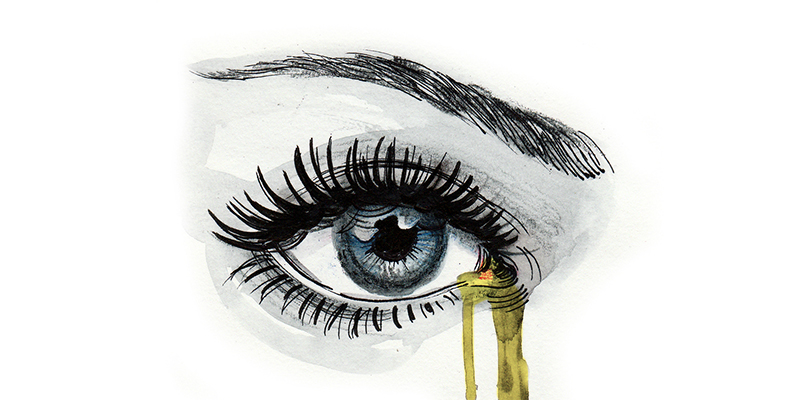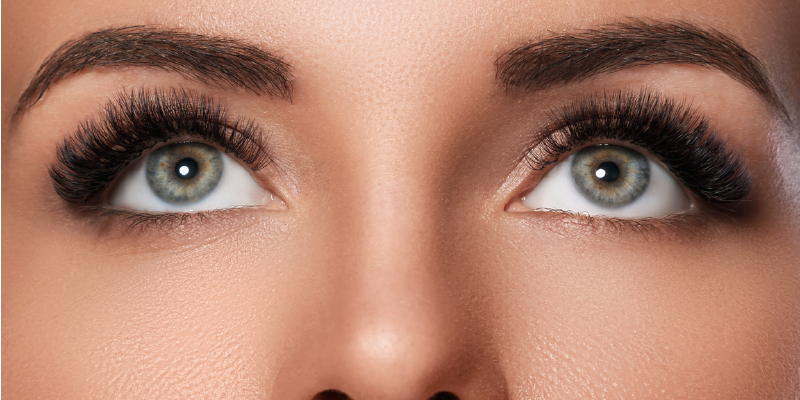With cold and flu season just around the corner, you might be gearing up tissues, decongestants, and maybe even a flu shot. But what about your eye health?
Most of us forget to take the same special precautions this time of year to help keep eye infections and other eye area problems to a minimum.
We’ve compiled a few tips to help you keep your eyes comfortable, clear, and healthy all winter long, even in the face of cold and flu season.
What Causes Sore, Painful Eyes When You’re Sick?

Have you ever noticed that when you’re dealing with a cold, you tend to really feel it behind your eyes?
If sore, painful eyes are a symptom of your cold or other illness, it’s likely that you have sinus pressure or possibly even a sinus infection
One of the biggest tell-tale signs of a sinus headache is isolated pain or pressure in a specific area of your head or face, such as behind your eyes or nose. This happens when your sinuses, which are the hollow cavities in the bones of your face, become inflamed and congested.
In some cases, blocked sinuses can result in an infection, which can make your symptoms even worse and may require antibiotics [1].
To relieve sinus pressure and the eye and head pain that it can cause, try:
- Running a humidifier in your home to help eliminate dry air
- Take a warm shower or sit in the steamy bathroom while the shower is running
- Place a warm compress over your eyes and face
- Talk to your doctor about taking antihistamines or decongestant medications
Reducing the Risk of Eye Infection During Cold and Flu Season

Another common eye problem this time of year is an infection.
Just like colds and the flu can be spread from one person to another, eye infections such as conjunctivitis, or pinkeye, can also run rampant this time of year [2].
Fortunately, there are a few ways that you can help to reduce your risk of developing an eye infection this season.
Follow These Tips:
- Wash your eyelids with a gentle, yet efficient cleansing product. Cliradex contains an ingredient called 4-Terpineol. It is one of the compounds found in tea tree oil. Studies have found T4O is the most efficient compound at eliminating Demodex mites. Thes are found in abundance on the eyelids and eyelashes [3].
If present in large numbers, these mites can cause redness, itching, dryness, and other signs of eye irritation. Additionally, keeping your eye area clean is one of the best ways to prevent all sorts of bacterial eye infections. - Wash your hands frequently. Think about how many times each day your hands come into contact with your face or even your eyes. If there are germs or dirt on your hands, you can easily spread them to your eyes and cause an infection or other complications.
- Blink frequently to help prevent dry eye, especially if you’re working on the computer or looking at another screened device for long periods of time.
- Take supplements such as vitamin C and omega fatty acids to keep your immune system strong and to help keep your eyes and skin moist and properly functioning.
- Get enough sleep. Your body needs between 7 and 9 hours of good quality sleep each night in order to function properly and to fight off infections and other illnesses [4].
In Summary
As the cooler winter months approach, take a few precautionary steps to optimize your overall health and your eye health for a cozy, comfortable holiday season.
Then, try to implement the same great preventative tips for the fall and winter into your regular routine throughout the rest of the year for clear, healthy eyes all year long!
[1] Sinus Headaches – WebMD
[2] Influenza: How to prevent and treat a serious infection – Harvard Health Publications
[3] Tighe, S., Gao, Y. Y., & Tseng, S. C. (2013). Terpinen-4-ol is the most active ingredient of tea tree oil to kill Demodex mites. Translational vision science & technology, 2(7), 2-2.
[4] How Much Sleep Do We Really Need? – National Sleep Foundation




